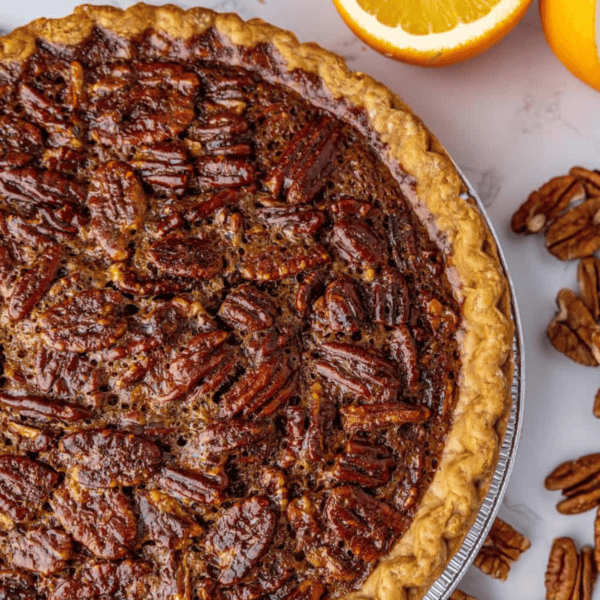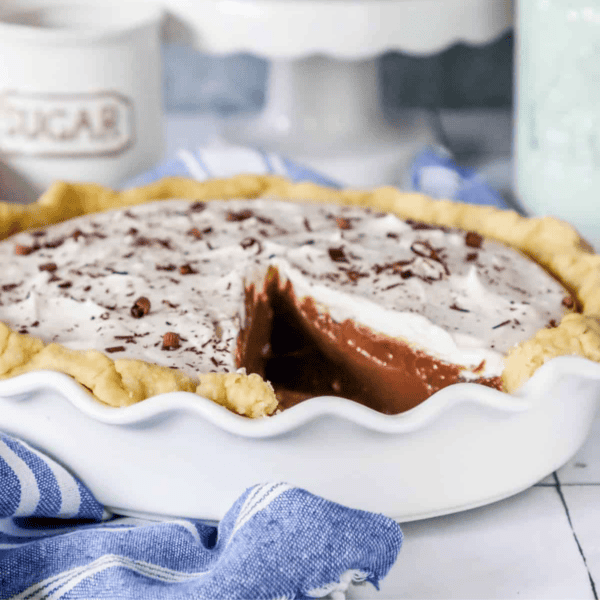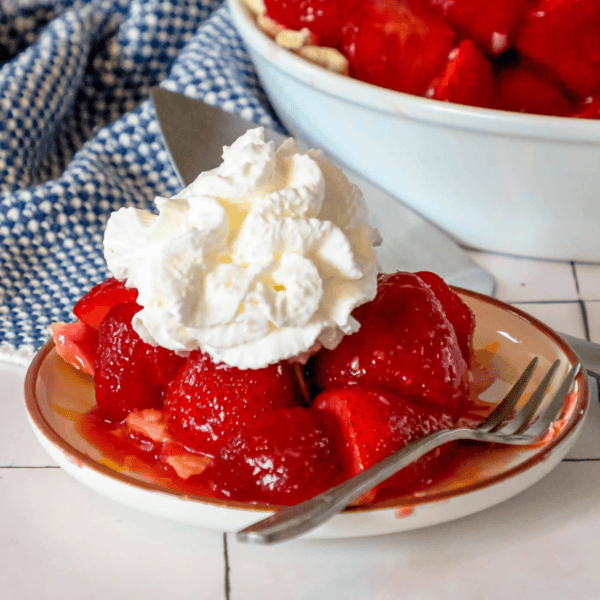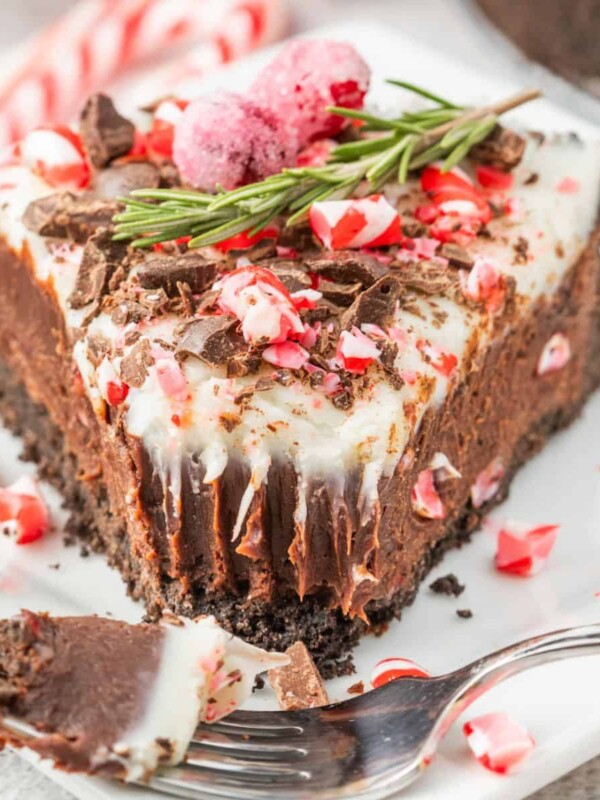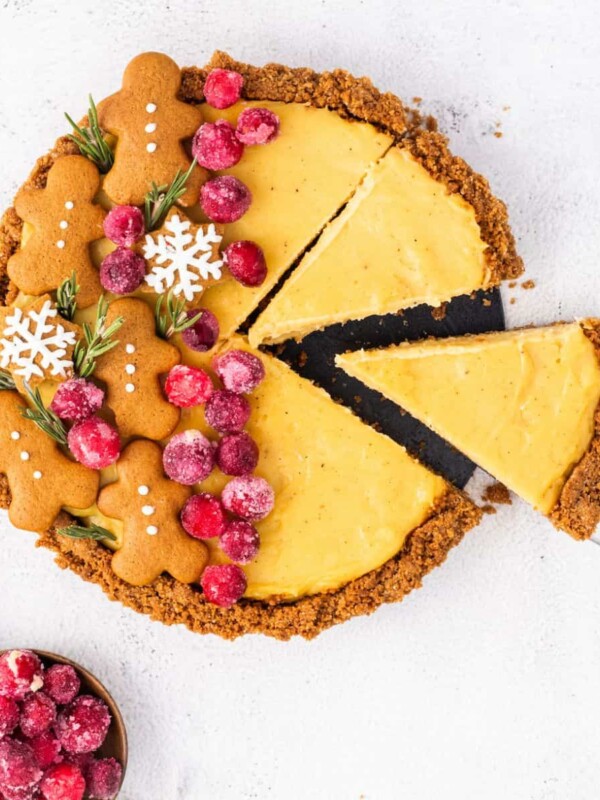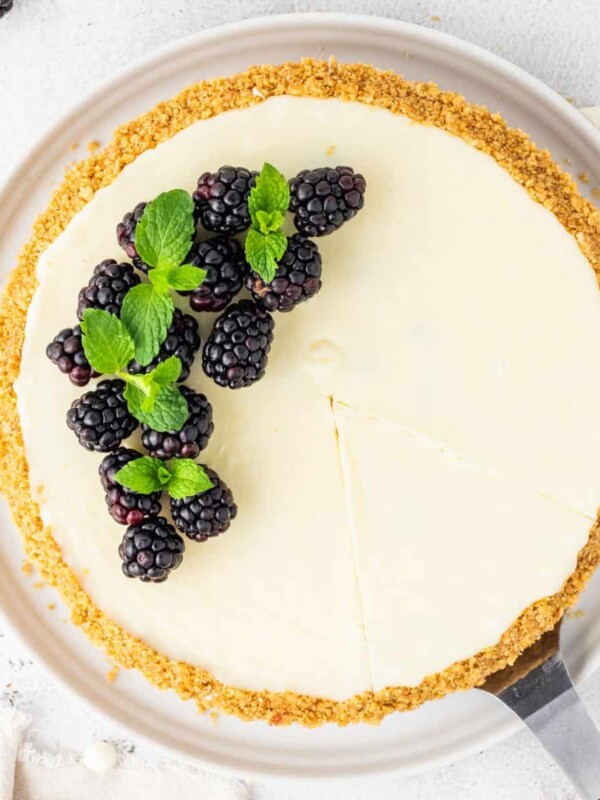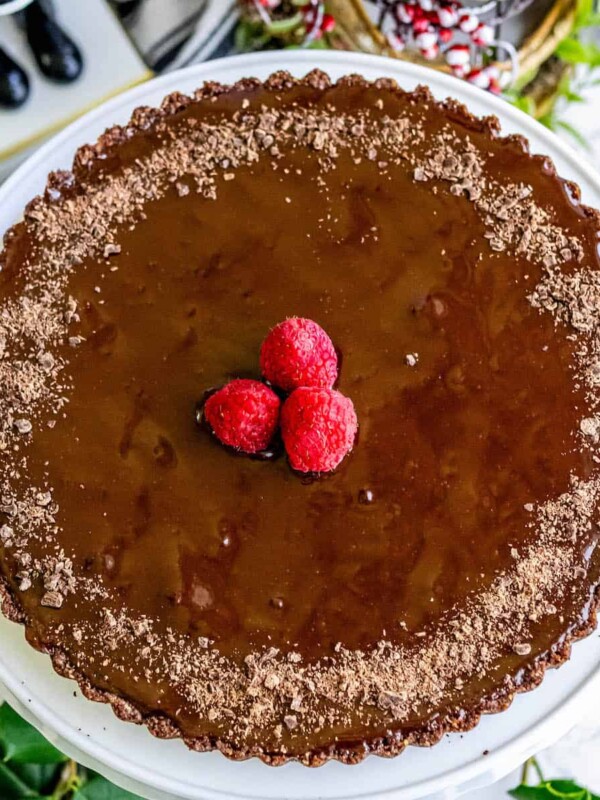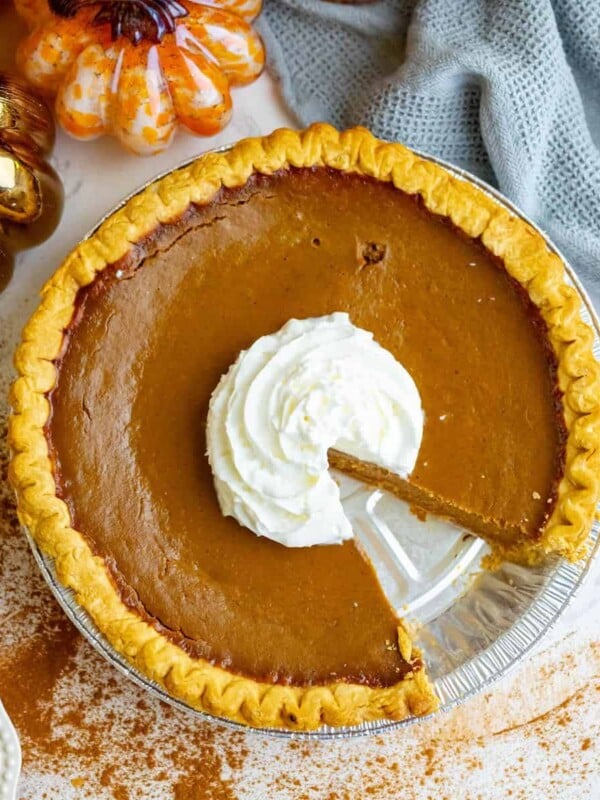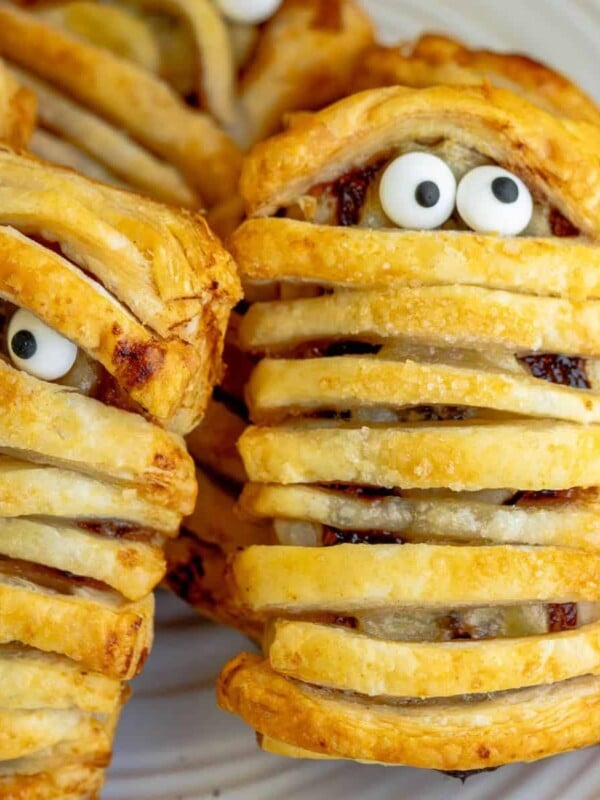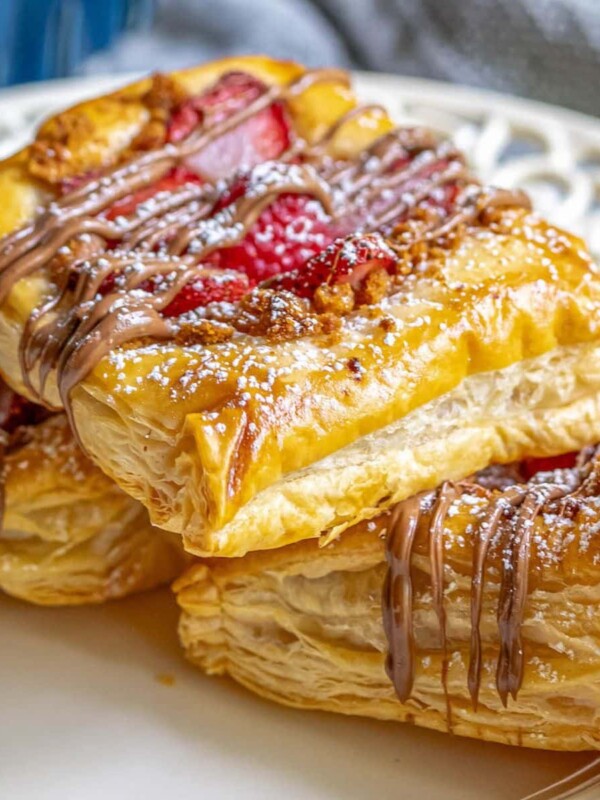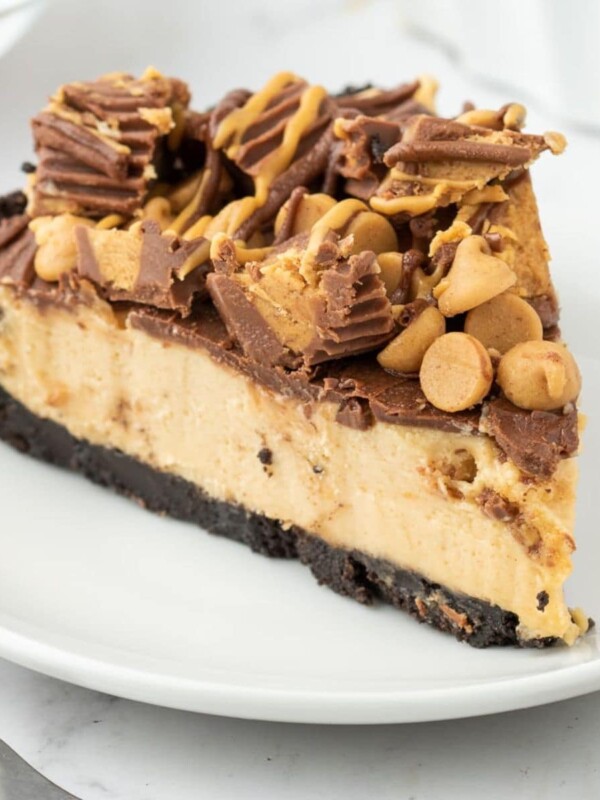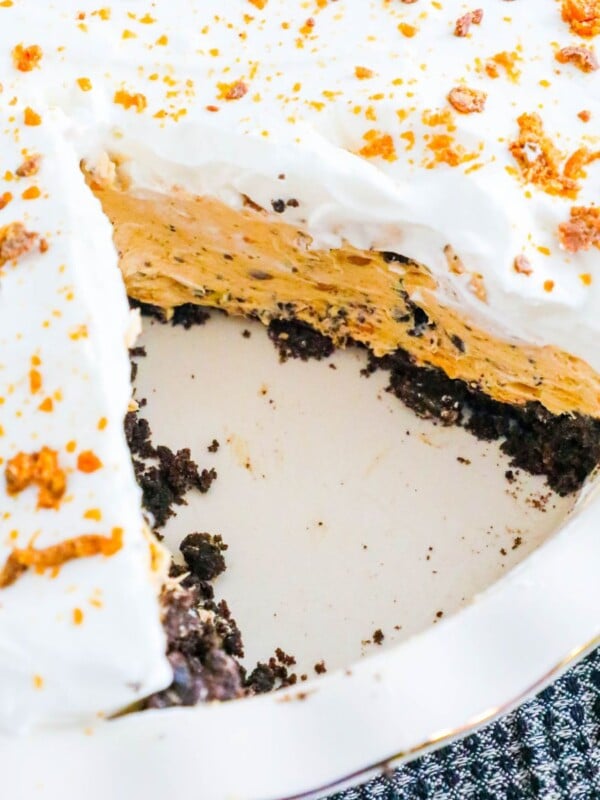This post contains affiliate links. Please read our disclosure policy.
This reliable classic easy pie crust is a simple combination of flour, water, salt, and butter. This minimal ingredient straightforward preparation makes it my go-to choice for the perfect pie foundation!
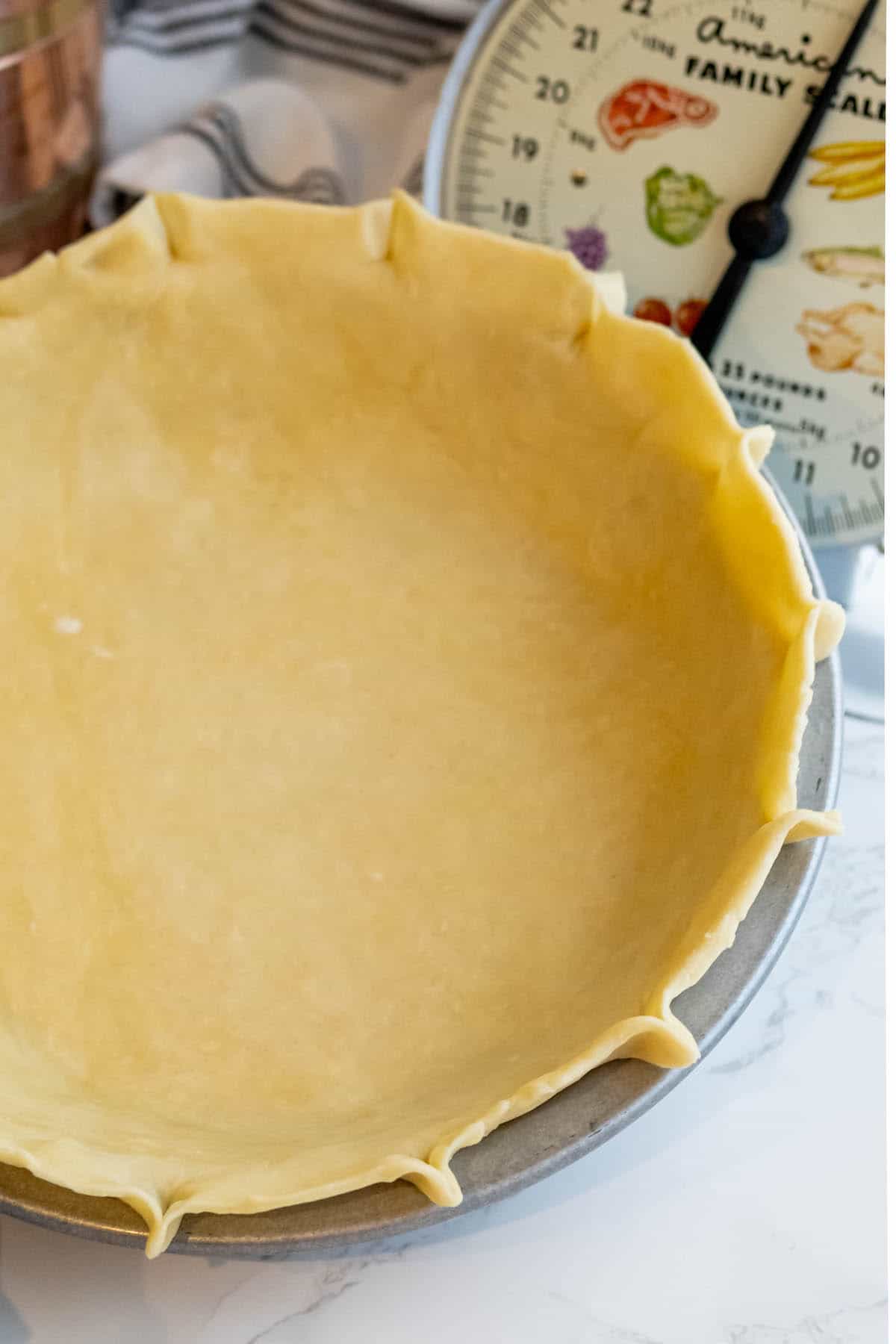
Don’t want all the extras in a recipe post? We provide a skip to recipe button in the top left corner, as well as a clickable table of contents, just below, to help make this page easier to navigate.
At Sweet C’s, I add lots of tips in all of my recipes – because I am a home cook without any formal training, and I find I am more confident making dishes when I understand why it works, and what each ingredient means to the flavor of a recipe. My goal is for even the most beginner home cook to feel empowered in the kitchen.
Table of contents
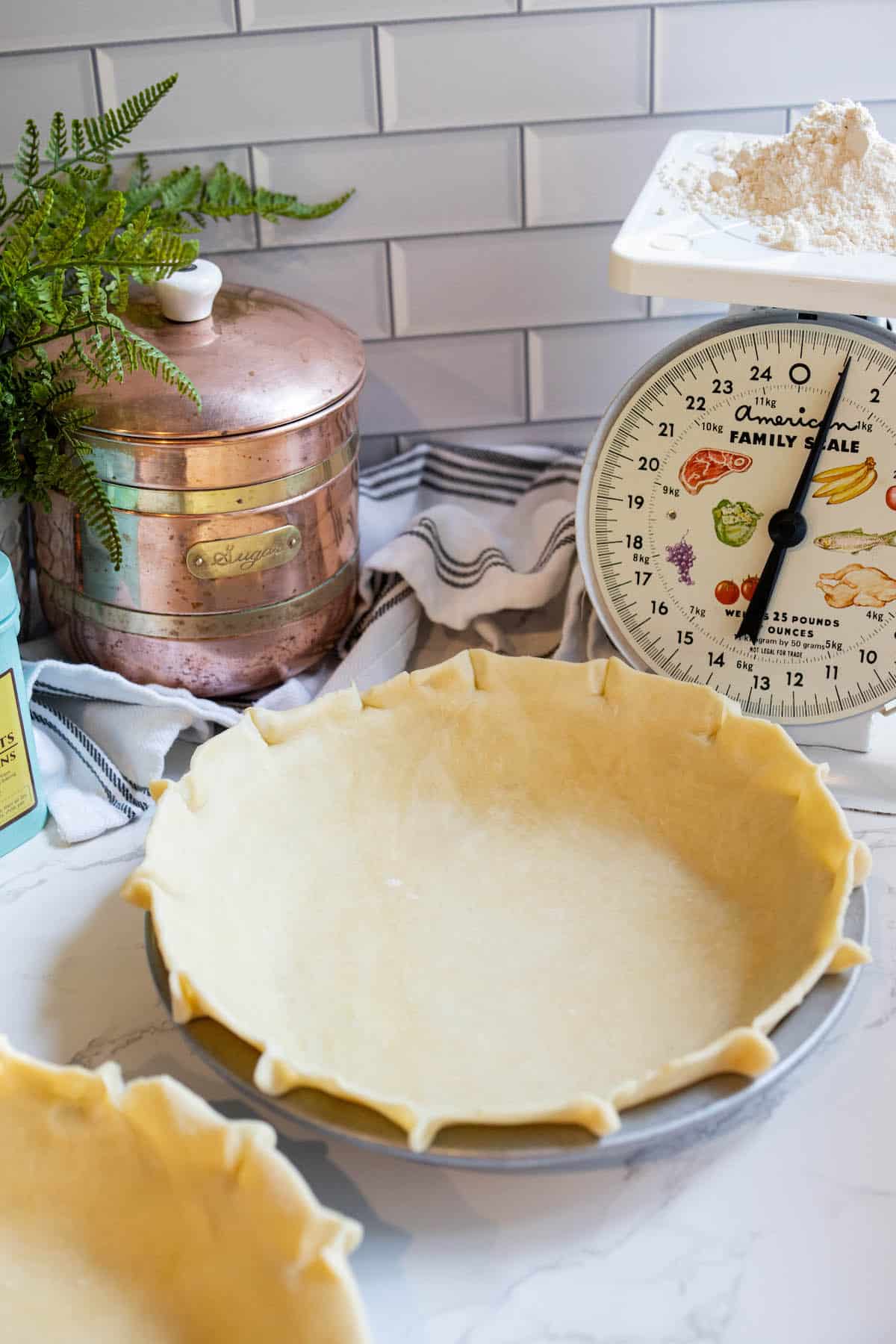
Super Simple Pie Crust
At the heart of many iconic dishes lies the humble pie crust—a delicate balance of flour, fat, and water, skillfully combined to create layers of flaky goodness. When executed well, a pie crust can be the perfect foil to both sweet and savory fillings, providing a crispy contrast to soft interiors or a sturdy vessel to hold juicy ingredients. Its basic components might suggest simplicity, but achieving that perfect, golden-brown finish, tender bite, and buttery flavor is an art, one that bakers and chefs dedicate much time to mastering.
Beyond its traditional role encasing apple or cherry fillings in classic American pies, the pie crust’s versatility is boundless. In savory dishes, it transforms into the foundation for quiches, filled with creamy egg custards combined with vegetables, meats, or cheeses. Pottages, like chicken or beef pot pies, utilize the crust to encase hearty, savory fillings, resulting in a comfort dish beloved by many. Hand pies or pasties, meanwhile, see the dough wrapped around a myriad of fillings, from spiced meats to sweet fruits, creating portable treats perfect for on-the-go snacking.
Furthermore, the realm of sweet applications is vast. Beyond standard fruit pies, there’s the world of tarts, where the crust holds rich chocolate ganache, zesty lemon curds, or silky custards topped with fresh fruit. Some adventurous bakers even use pie crusts as the base for cheesecakes or as twisted, sugar-sprinkled sticks served as sweet snacks. The adaptability of pie crust, its blank canvas quality, means that across different cultures and cuisines, it has found a home, molding itself to the culinary ethos of the place, yet always remaining that delightful combination of flaky, tender, and delectably golden. This recipe is the perfect super simple pie crust that can be used however you wish!
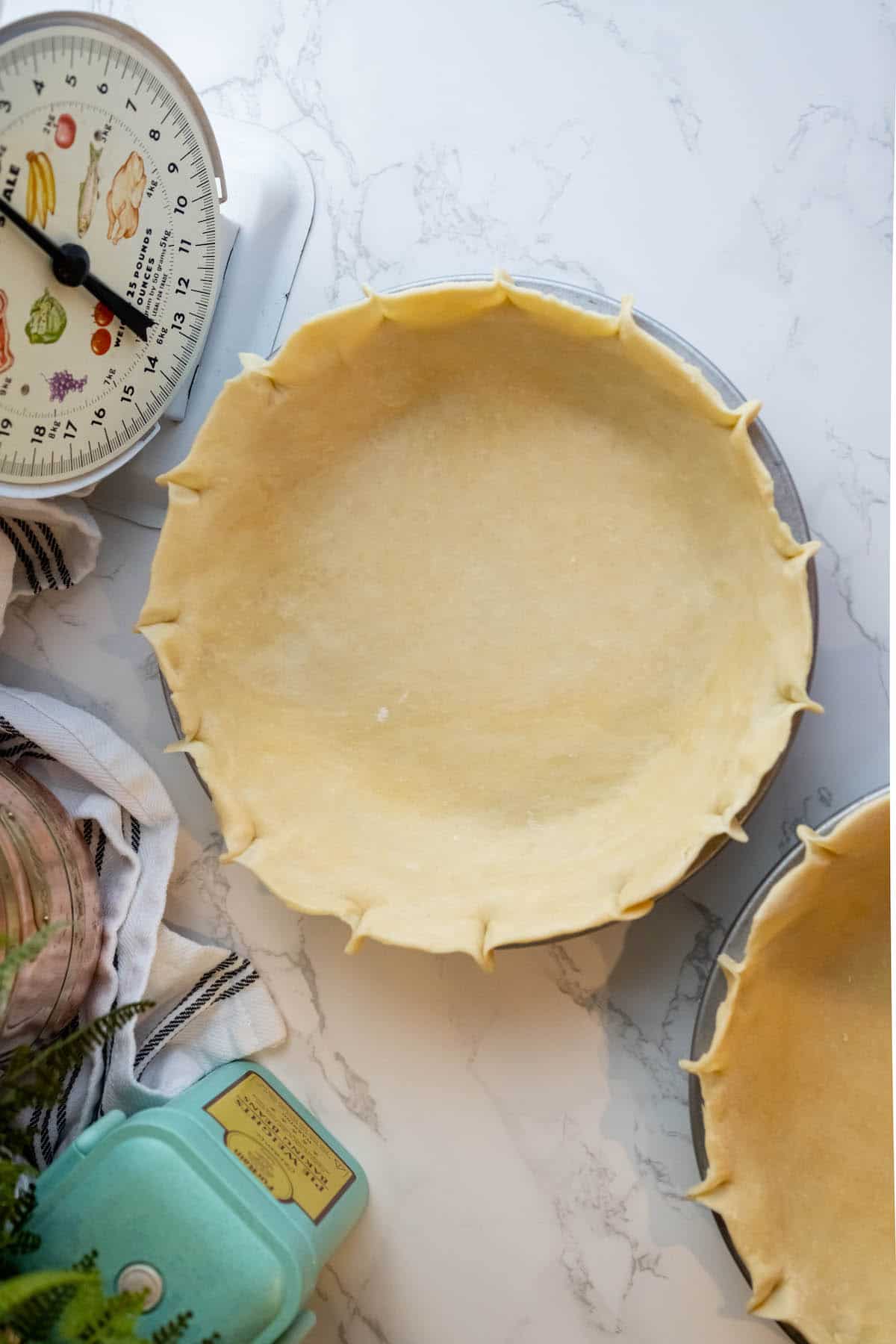
How to make Pie Crust
First you will need to assemble the following ingredients:
- All-purpose flour (2 ½ cups) – All-purpose flour is a versatile milled wheat flour with a balanced protein content, suited perfectly for a flakey pie crust.
- Sea salt (½ tsp) – sea salt is a naturally sourced salt with a small, uniform particle size, offering a quick dissolve and even distribution in dishes, it is necessary to season the pie crust.
- Sugar (1 tbsp ) – you can add sugar if you want to make a sweet crust otherwise omit this ingredient.
- Unsalted butter (1 cup) – The butter must be super cold, its best to cut up into cubes then freeze it for about 10 minutes before starting the crust.
- Ice water (6-8 tbsp) – ice cold water will help the butter and flour come together. I usually fill a glass with ice then pour in some water before starting the recipe so its ice cold by the time I need it.





Use this Method
In a Food Processor:
- Add the flour and salt (sugar if using) to the food processor, pulse to combine.
- Scatter the butter cubes in the flour, and toss them a bit to coat them in flour so they don’t stick together.
- Pulse the mixture in the food processor about 15 seconds until dough looks like course bread crumbs.
- Turn the food processor on and add the ice cold water 1 tablespoon at a time through the feed tube on the top.
- Pour the mixture out onto a clean surface and push the dough together and work it into a ball. Cut in two and shape dough into flat discs about the size and thickness of hockey pucks.
- Wrap in plastic wrap and refrigerate for at least an hour before rolling out. You can refrigerate it for up to 2 days or freeze it at this point.
If Making Dough By Hand:
- Combine the flour and salt (plus sugar if using) in a large bowl. Add the cold butter and using a fork or pastry cutter combine until you get a coarse mealy texture like bread crumbs.
- Add 4 tbsp of water and work into the dough, then add more as needed until you can bring the dough together and knead for just a minute or two till it comes together.
- Cut into two pieces and shape dough into flat discs about the size and thickness of hockey pucks.
- Wrap each piece of dough in foil and refrigerate at least an hour before rolling out. You can refrigerate it for up to 2 days or freeze it at this point.
Rolling Out the Dough
- Remove the dough discs and roll each out to the thickness of a pound coin or quarter with a rolling pin on a lightly floured surface. You will want to roll it out so you can cover over the edge of the pie pan.
- Roll the dough into the pie pan and gently press into the dish.
- Trim the excess pastry around the edge, leaving ½ inch past the edge of the dish, using a knife or scissors.
- Crimp the dough by pinching it very firmly every ½ inch all the way around.
- Take a fork and prick the crust all the way around (this will help prevent air bubbles from forming)
- Fill one crust and top with the other or roll both out and bake as directed.
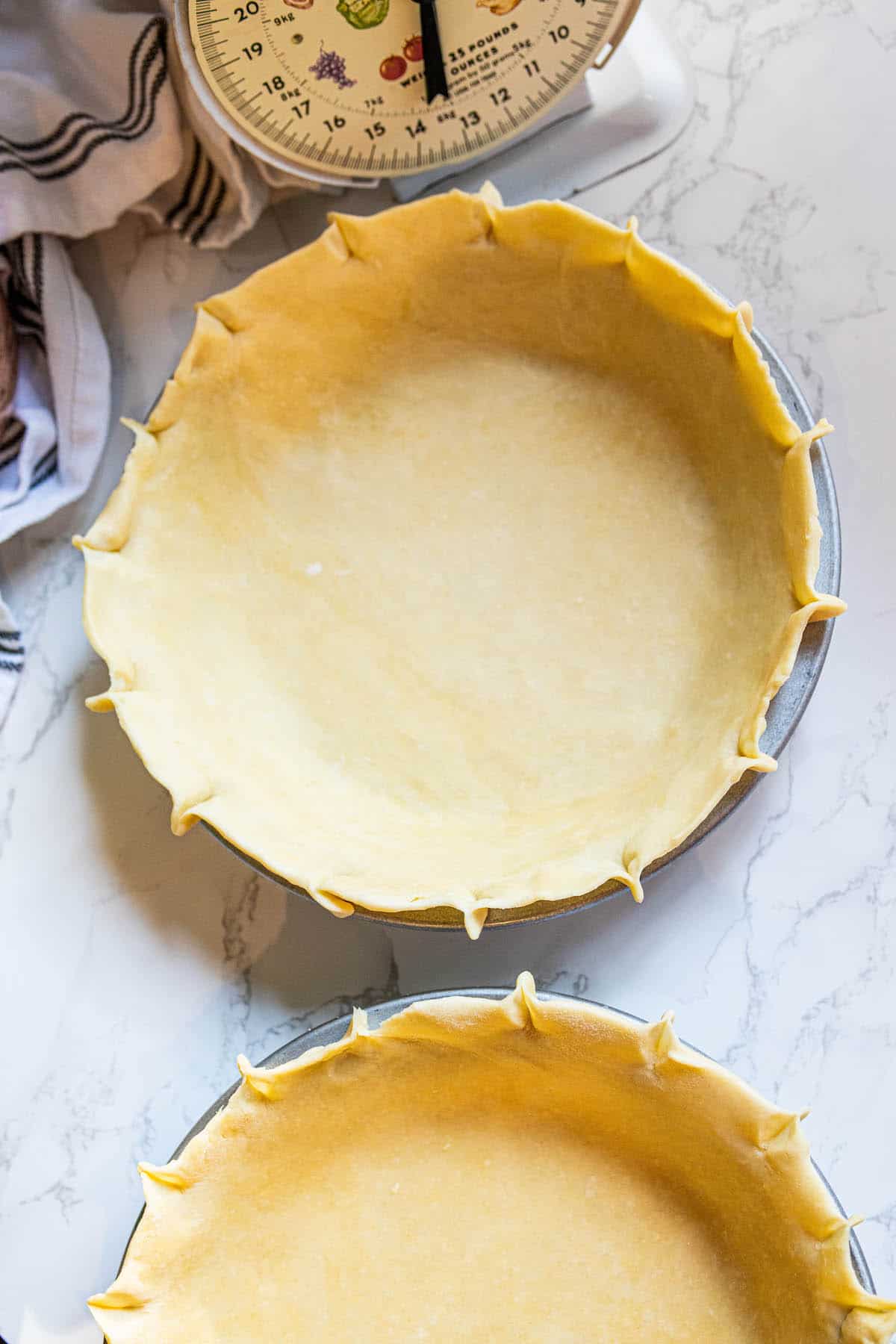
Tips and Tricks to Perfect Pie Crust
Cold Ingredients: Start with very cold butter, and even consider chilling your flour beforehand. Cold ingredients prevent the butter from melting too early, resulting in a flakier crust.
Avoid Overworking: Handle the dough as little as possible. Overworking can activate the gluten too much, leading to a tough crust.
Pea-sized Butter Chunks: When cutting in the butter, leave some pea-sized chunks. These melt during baking and create steam, leading to a flaky texture.
Water Amount: Add water slowly and just enough to bring the dough together. Too much water can make the crust tough.
Rest and Chill: Once your dough is made, wrap it in plastic and let it rest in the refrigerator for at least an hour. This relaxes the gluten and solidifies the butter.
Roll Evenly: When rolling out the dough, ensure even thickness for consistent baking.
Blind Bake: If your filling is wet or cooks quickly, consider blind baking (pre-baking) your crust with pie weights to ensure the bottom isn’t soggy.
Egg Wash: Brush the top of your crust with a beaten egg or egg wash mixture (egg with a bit of water or milk) for a golden and shiny finish.
Edges: To prevent the edges of the pie from browning too quickly, you can cover them with aluminum foil or a pie shield.
Stay Patient: Allow the pie to cool adequately before cutting. This lets the juices and fillings set, ensuring cleaner slices.
Practice: Like all baking, the more you practice, the better you get. So, don’t be disheartened by initial hiccups.
FAQs
A tough crust usually results from overworking the dough, which activates the gluten. It’s crucial to handle the dough gently and minimally.
Absolutely! You can prepare the dough, wrap it tightly, and store it in the refrigerator for a few days or freeze it for up to a month. Just ensure it’s defrosted in the fridge before rolling it out.
Cold butter creates steam when baked, leading to flaky layers in the crust. If the butter melts prematurely, the crust can become dense.
You can use two knives in a criss-cross motion or even your fingers to break the butter into the flour, but work quickly to avoid warming the butter. I love this food processor and this pastry cutter, they are great kitchen tools to have around.
The dough should just come together when pinched. If it’s too crumbly, add a little more water; if it’s too sticky, you may have added too much.
Blind baking, or pre-baking the crust without filling, is crucial for pies with a wet filling or a filling that bakes quickly. It ensures the bottom crust isn’t soggy.
Once baked and cooled, keep it at room temperature if using within a day. For longer storage, wrap it tightly and refrigerate.
While unsalted butter is preferred for precise control over salt content, you can use salted butter—just adjust or eliminate any added salt in the recipe.
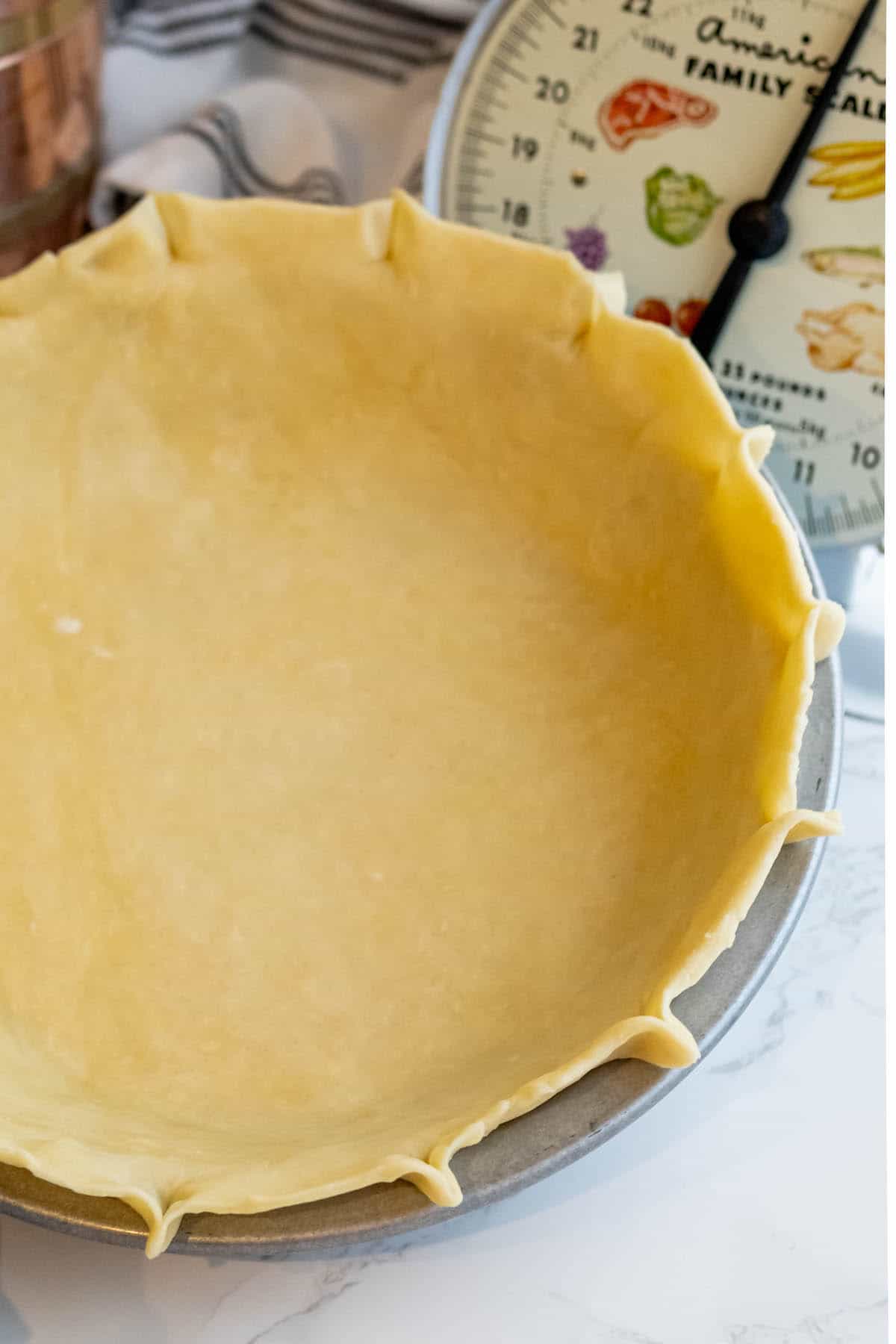
Delicious Pie Recipes for your Crust
Try some of these amazing options in your pie crust!
Fruit Pies: Such as apple, cherry, blueberry, peach, or mixed fruit pies.
Cream Pies: Including coconut cream, banana cream, or chocolate cream pies.
Custard Pies: Like the classic pumpkin pie, sweet potato pie, or a simple egg custard pie.
Tarts: Including lemon curd tart, fruit tart with pastry cream, or a chocolate ganache tart.
Nut Pies: Pecan pie or walnut pie, often featuring a sticky, caramelized filling.
Chess Pie: A southern favorite with a sweet, buttery, and slightly custardy filling.
Mousse Pies: Such as chocolate or peanut butter mousse pies.
Quiches: Egg-based pies with a variety of mix-ins like spinach, bacon, cheese, mushrooms, and more.
Pot Pies: Chicken pot pie, turkey pot pie, or beef pot pie with creamy fillings and vegetables.
Meat Pies: Such as British steak and kidney pie or Australian meat pies.
Vegetable Pies: Pies filled with a mix of seasoned vegetables, cheeses, and sometimes a creamy sauce.
Tarts: Savory tarts like tomato and goat cheese tart, caramelized onion tart, or a zucchini and ricotta tart.
Hand Pies or Empanadas: Portable pies filled with meats, cheeses, vegetables, or even fruits.
Galette: A rustic, free-form pie or tart, often with exposed fillings in the center, which can be sweet or savory.
Cheesecake Base: Instead of the traditional graham cracker crust, a pie crust can be used for a different texture.
Pie Crust Cookies: Cut-outs of pie crust sprinkled with sugar and cinnamon, then baked until crispy.
Try these favorite pie recipes too:
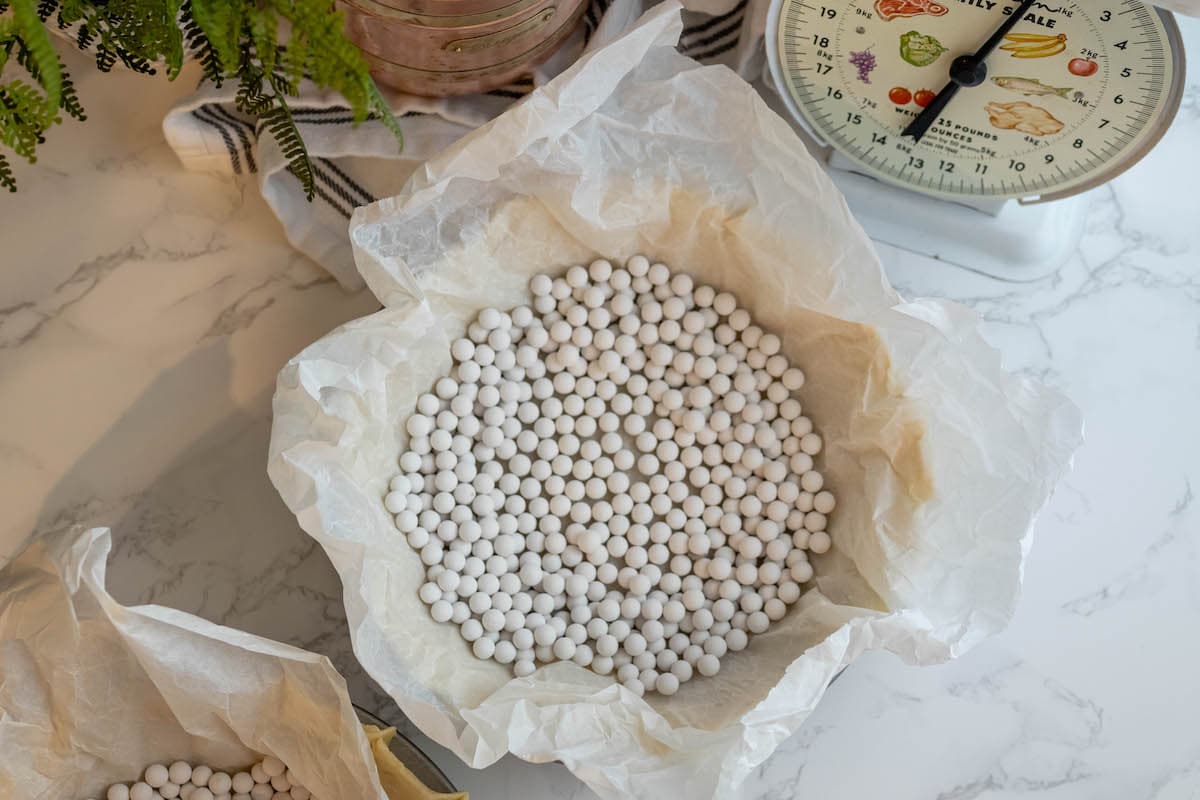
If you love this easy recipe please click the stars below to give it a five star rating and leave a comment! Pease also help me share on Instagram, Facebook, and Pinterest!
Follow on Instagram
Click here to view the web story for this recipe!
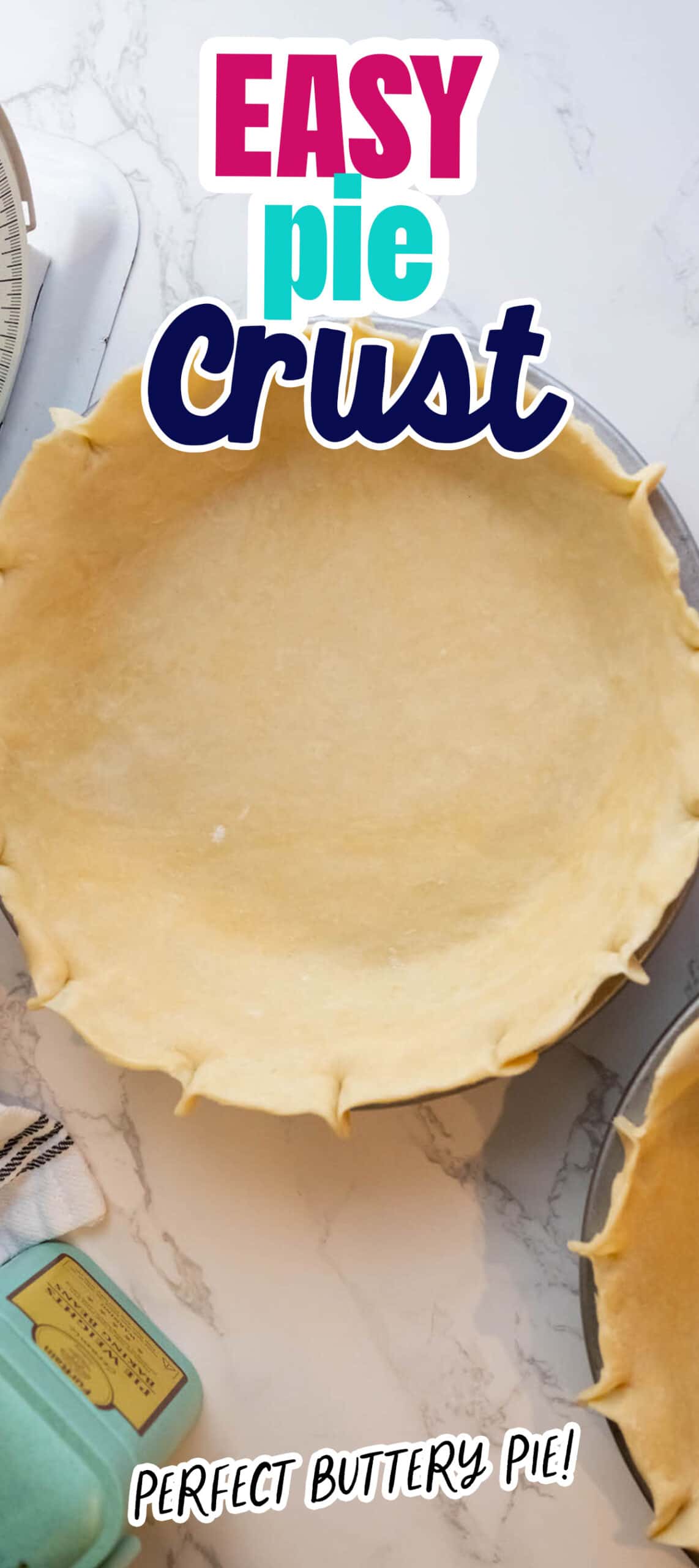
Only have 30 minutes to get dinner on the table? Sign up for my 30 minute dinner plans direct to your inbox!
Find and shop my favorite products in my Amazon storefront here!
Easy Pie Crust

Equipment
Ingredients
- 2 ½ cups all-purpose flour
- ½ tsp fine sea salt
- 1 tbsp sugar, if you want a sweet crust
- 1 cup unsalted butter, cut into ½ inch cubes, cold
- 6-8 tbsp ice water
Instructions
In a Food Processor:
- Add the flour and salt (sugar if using) to the food processor, pulse to combine.
- Scatter the butter cubes in the flour, and toss them a bit to coat them in flour so they don't stick together.
- Pulse the mixture in the food processor about 15 seconds until dough looks like course bread crumbs.
- Turn the food processor on and add the ice cold water 1 tablespoon at a time through the feed tube on the top.
- Pour the mixture out onto a clean surface and push the dough together and work it into a ball. Cut in two and shape dough into flat discs about the size and thickness of hockey pucks.
- Wrap in plastic wrap and refrigerate for at least an hour before rolling out. You can refrigerate it for up to 2 days or freeze it at this point. Proceed to "Rolling Out the Dough Section" if using the crust right away.
If Making Dough By Hand:
- Combine the flour and salt (plus sugar if using) in a large bowl. Add the cold butter and using a fork or pastry cutter combine until you get a coarse mealy texture like bread crumbs.
- Add 4 tbsp of water and work into the dough, then add more as needed until you can bring the dough together and knead for just a minute or two till it comes together.
- Cut into two pieces and shape dough into flat discs about the size and thickness of hockey pucks.
- Wrap each piece of dough in foil and refrigerate at least an hour before rolling out. You can refrigerate it for up to 2 days or freeze it at this point. Proceed to "Rolling Out the Dough" section if using immediately.
Rolling Out the Dough
- Remove the dough discs and roll each out to the thickness of a pound coin or quarter with a rolling pin on a lightly floured surface. You will want to roll it out so you can cover over the edge of the pie pan.
- Roll the dough into the pie pan and gently press into the dish.
- Trim the excess pastry around the edge, leaving ½ inch past the edge of the dish, using a knife or scissors.
- Crimp the dough by pinching it very firmly every ½ inch all the way around.
- Take a fork and prick the crust all the way around (this will help prevent air bubbles from forming)
- Fill one crust and top with the other or roll both out and bake as directed.
Notes
Nutrition
Nutrition information is automatically calculated, so should only be used as an approximation.
